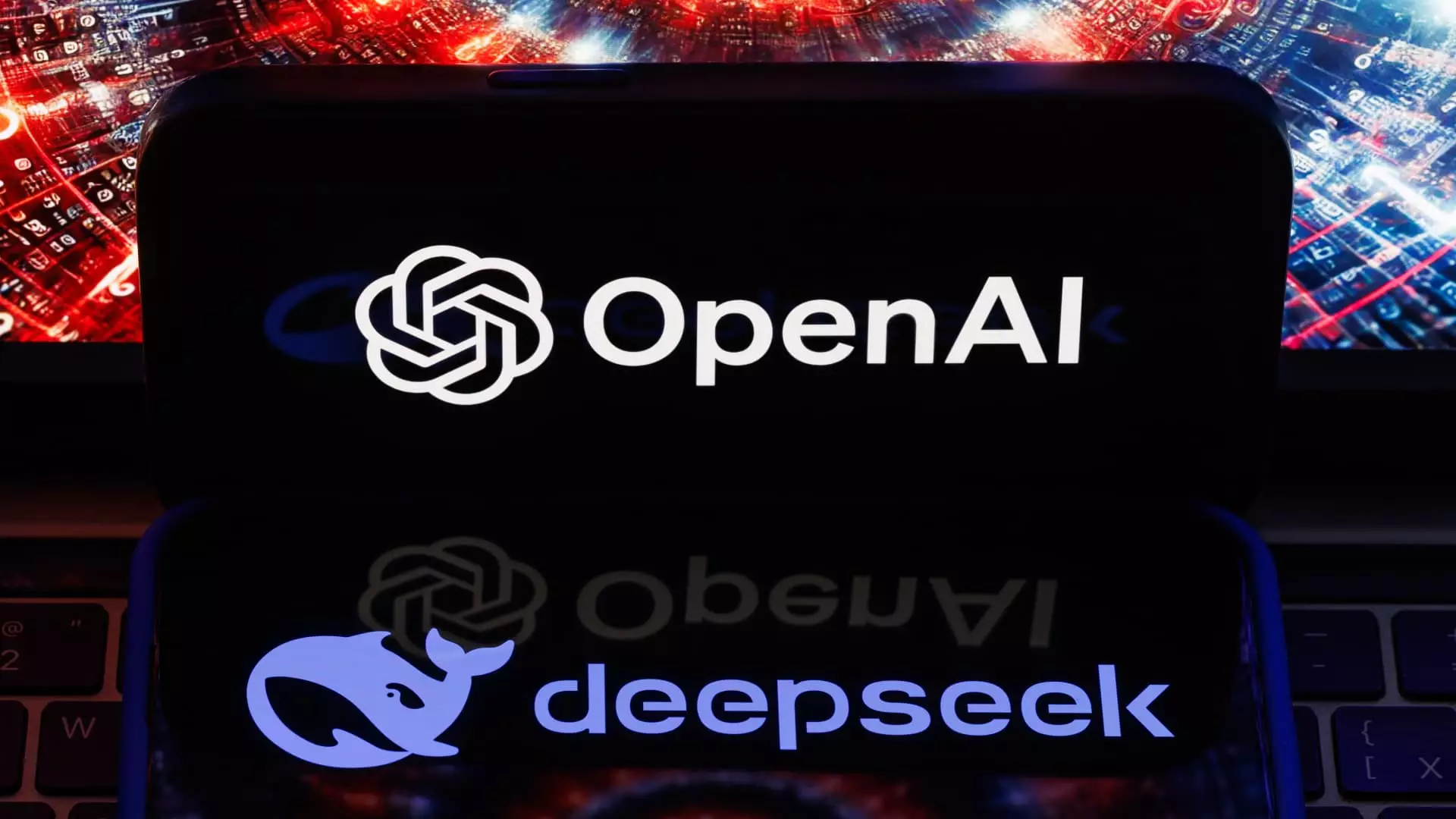In recent discourse surrounding artificial intelligence (AI), a key player has emerged from China that is stirring the pot of international competition. DeepSeek, an AI lab based in China, has generated a significant amount of buzz in the tech community following its announcement of a cost-effective AI model, prompting discussions about the ongoing rivalry between the United States and China in this technologically pivotal domain. Amid rising global stakes, major tech executives shared their thoughts at France’s Artificial Intelligence Action Summit, marking a critical moment in the assessment of AI capabilities across borders.
DeepSeek’s recent revelations have challenged pre-existing assumptions about China’s positioning in the AI landscape. With purported training costs of merely $6 million, the company’s new models drastically undercut the enormous financial outlays characteristic of leading Western efforts. For context, giants like OpenAI and Anthropic routinely spend billions to achieve their technological advancements. This significant cost differential not only raises eyebrows but also serves as a wake-up call to the Western tech community. Chris Lehane, the Chief Global Affairs Officer at OpenAI, articulates the gravity of the situation by highlighting a growing divide between democratic and authoritarian frameworks in AI development.
Lehane’s comments reflect widespread concern that, while DeepSeek’s capabilities are impressive, they are overshadowed by potential censorship mechanisms within their AI applications. Notably, queries related to sensitive topics, such as the Tiananmen Square massacre, elicit responses that suggest significant limitations—serving as a reminder of how governance and technology interweave in China. Such observations lead to larger questions: Can AI truly be considered innovative if it is shackled by the limitations imposed by its governing body?
The remarks made by Reid Hoffman, co-founder of LinkedIn and a prominent venture capitalist, underscore the urgency of addressing this emerging competition effectively. “The competition is afoot with China,” he stated, reflecting the growing unease that American companies feel amidst such advancements. The race to develop superior AI stems not only from a desire to innovate technologically but also encompasses broader geopolitical implications. The U.S. has long held the belief that it is at the forefront of technological prowess—however, DeepSeek’s entrance into the arena complicates this narrative.
Abishur Prakash, a strategic advisor, echoes this sentiment, asserting that the perceived gap between the U.S. and China has drastically narrowed. This perception shift does not merely challenge American dominance; it signifies a fundamental change in the global technology landscape where the West can no longer assume automatic superiority. As Prakash wisely notes, the tech community’s grasp of China’s capabilities remains alarmingly superficial, necessitating a reevaluation of strategic approaches in light of DeepSeek’s rapid advancements.
Despite the enthusiasm surrounding DeepSeek’s achievements, skepticism looms. Critics note that the low-cost model might not reflect the operational realities, with some analyses estimating that the company has spent much more than it claims. This divergence in financial perception raises questions about the sustainability of such an approach and whether DeepSeek’s strategy is built on a solid foundation or merely a precarious façade.
Additionally, claims that DeepSeek’s innovations may stem from techniques such as “distillation”—where larger, established AI systems inform the creation of new models—cast further doubt on its independent efficacy. OpenAI itself raised flags regarding the possibility of DeepSeek having improperly utilized data from its models, underscoring an undercurrent of mistrust that replaces excitement with caution.
As the dust settles, the consensus among leading tech executives is that while DeepSeek’s innovations signal a shifting paradigm in AI development, it is premature to view it as an existential threat to the likes of OpenAI and Anthropic. Many insiders sketch a cautious future where challenges posed by DeepSeek are real but manageable. Victor Riparbelli, CEO of the AI video platform Synthesia, suggests that even in light of these developments, the overwhelming majority of enterprises are unlikely to abandon established models in favor of DeepSeek’s less familiar framework.
As the geopolitical and technological landscapes evolve, one thing remains clear: the competition is intensifying. The implications of this rivalry go well beyond mere financial costs and performance metrics; they delve deep into issues of censorship, governance, and the future of AI ethics. The outcome of this contest may eventually redefine not just how AI is developed, but how it is leveraged across the globe. The stage is set—who will emerge victorious in this high-stakes game of innovation?

